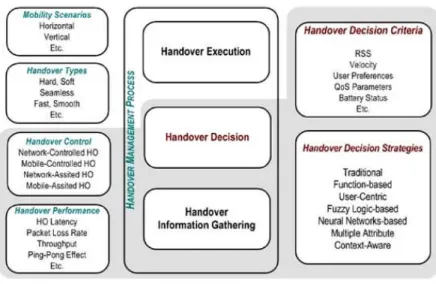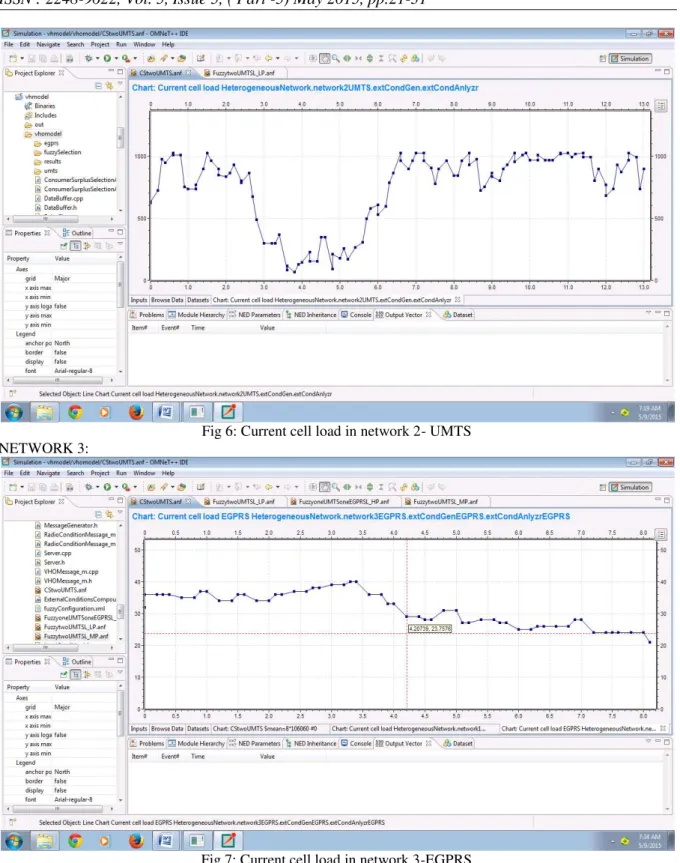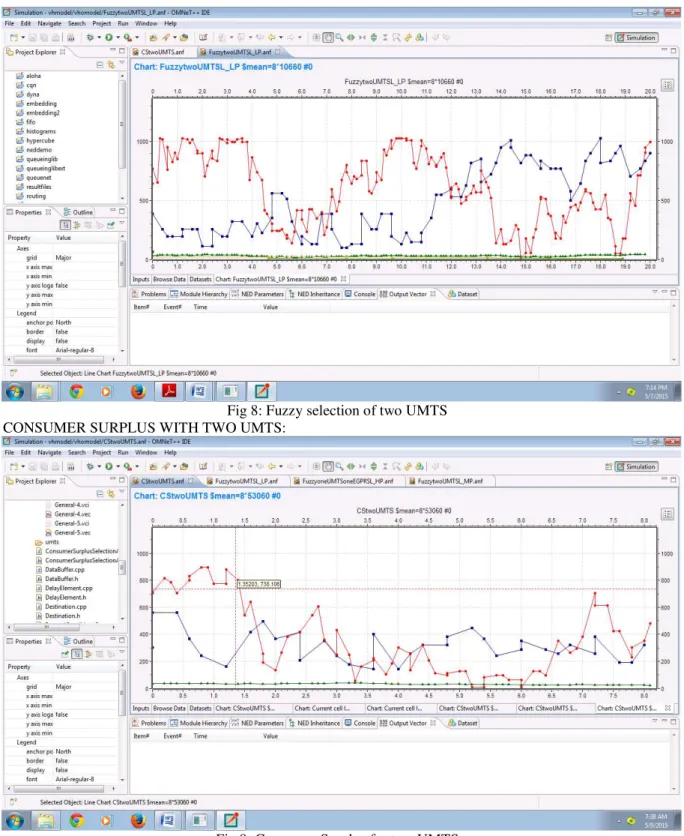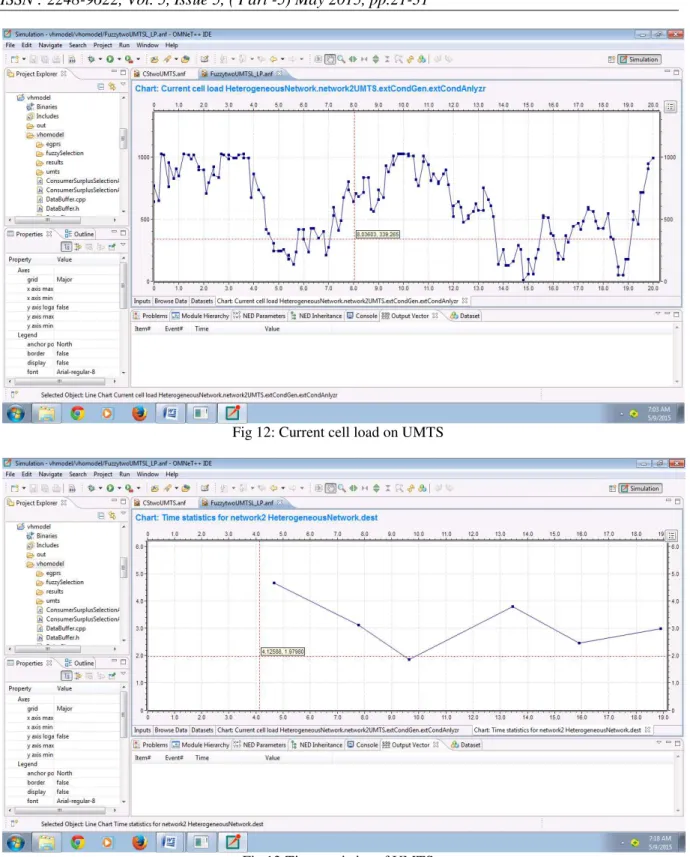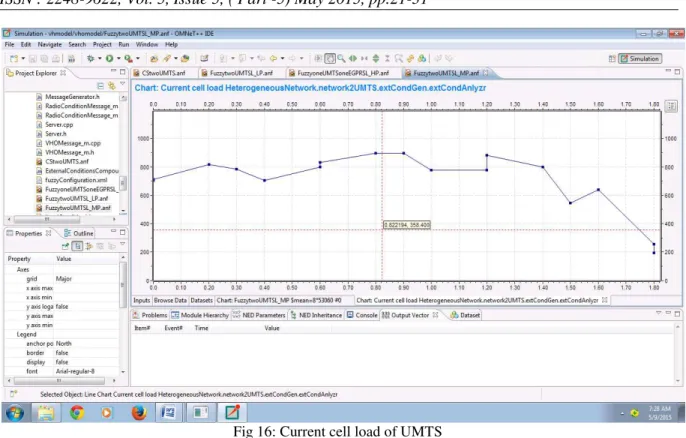A Survey on Vertical Handover Decision Framework In
Heterogenious Wireless Networks
Narayana Srivyshnavi, R.China Appala Naidu
Student (M.Tech) Associate ProfessorCse Department Cse Department
St Martin’s Engineering College-Dhulapally, Secunderabad, Telangana, India-500014
Abstract
:The wireless network of future will consists different radio access technologies. The transfer of mobile terminal from one point to another point in an active communication needs a handover decision. Due to which vertical handover decision will be a priority. The vertical handover decision can be based on different criteria such as bandwidth, signal strength, cost etc., in order for network selection decision we use two algorithms such as customer surplus value and fuzzy selection algorithm. Our goal is to develop a framework for efficient simulation of VHO selection algorithm .This situation is on OmneT++ in various wireless networks.
Keywords: Handover decision, Bandwidth, Signal Strength, Customer surplus value, Fuzzy selection.
I.
Introduction:
With the advancement in the next generation wireless communication technology the communication network is upgrading in a vast extent. The heterogeneous environment has a various access technologies that change in bandwidth latency or cost. In communication when a user moves from one point or terminal to another its management becomes an essential issue. The mobility management is done through handover decision management. When the mobile moves from the coverage bandwidth or boundary in an ongoing or active communication, quality of service should be guaranteed. The handover management issues contains mobility scenarios, decision algorithms, etc., The mobility are divided into two handovers horizontal and vertical. A horizontal handover occurs in a same networks i.e., said a homogeneous network communication that occurs in different device but are present in the same network. The horizontal decision is required when the serving route becomes unavailable to the mobile terminal when it is the movement. The horizontal decision
basically focuses on the received signal strength and evaluation of the mobile host. Handover management concept is the most important in order to develop supporting solution for mobility. Handover is basically a mechanism in which mobile terminals and hosts are monitored during its active and ongoing communication in movement. The features given by handover management are mobility scenarios, type control and performance and most importantly handover decision.
Process for handover management: Handover management is done in three phases
i. Information gathering: It is the collection of the required information for a need in handover which is the initial or system discovery phase in a handover.
ii. Handover decision: It is a phase in which we need to pick a decision on how to select a most suitable criteria according to user choice. This phase initiates to the execution phase for handover decision.
iii. Execution: To monitor the change required in the resolution of the decision phase.
Luo Zhenshuai Int. Journal of Engineering Research and Applications
www.ijera.com
ISSN : 2248-9622, Vol. 5, Issue 5, ( Part -5) May 2015, pp.21-31
Fig 1: Handover Management Concept
The handover procedure on one hand can be difficult when the mobile terminal is connected to the particular point at a specific time. On the other hand it can be easy the mobile terminals connected to more than one point at a specific time. There should be a transparency in the transition on to a new network point. The handover decision measures and gathers from both side entity when and where to carry out the decision. The most popular and well known methodology used in the handover is Mobile IP which is an internet protocol layer mobility management protocol. In vertical handover decision we try estimating and calculating certain additional condition like offered services , monetary costs, user preferences ,network conditions etc.,
In order to create a framework in a network simulation, we a software called OmNeT++. OmNeT++ is an open source, compound based and modular simulation framework. It is called as Objective Modular Network Test bed in C++. User can implement a simple C++ module along with using OmNeT++ library classes. In this each module communicate with each other using a method of message exchanging. The interface and structure of the modules are specified using (NDL) network description language for simulations. The simulations are configured easily by initialing files i.e., the .ini files. OmNeT++ files are built on NED and omnetpp.ini does not use any script, which makes the simulations easy. A sample scenario of simple simulation in OmNeT++,
Fig 2: Simple simulation sscenario
communication over heterogeneous networks. One primary aim is to try to avoid over heading signals and unnecessary handover as well as to maintain network and user choices. We use various factors for this process such as decision for handover, control schemes and various capabilities for handover. We try focusing on a fuzzy selection techniques in handover decision over heterogeneous networks.
II.
Research Methodologies:
An approach we focus the handover on the fuzzy logic its delay time to reach to the destination. A. Brief on fuzzy logic: The initiation of the fuzzy logic started in the year of 1965 by a professor at
the University of California. Fuzzy logic is a multivalued logic, which allows transitional values to be defined between conservative evaluations like true/false, yes/no high/low etc., Fuzzy logic can be used as an understanding model for neural networks as well as for giving a more accurate explanation of their performance. Fuzzy logic provides an ease to design certain networks without emphasizing on the algorithms. Fuzzy logic provides a different way to approach a control or a classification problem. This helps us to focus on what the system should do rather than trying to model how it works. The goal of the fuzzy logic theory is to reduce principles of reasoning to a code. The fuzzy logic a proposition may be true or false, on an intermediate truth value as may be true (like probable yes or probable no). The fuzzy logic follows the principles of the set theory. In fuzzy logic an assertion is allowed to be more or less true. A truth value in the fuzzy logic is real number in the interval [0, 1]. The design of a fuzzy system is a trade –off between mathematical rigor and engineering requirements.
B. Brief on the delay element in handover decision: A delay element models the duration of the transmission of a data. The effective transfer of data is modeled using the element and the iterative module. If a fraction of the file (an IP packet) is send, there would be a decrease in the length of the file if the length of IP packet is reduced. When the file length indicates null it means there are no more files left to be sent, and the analogues OMNeT++ message will be delivered to the sink (the destination module). The delay element manages the time in the transfer of an IP packet. This time is dependable on the transfer rate provided by the radio access network, which depends on the load and the type of network. Here we have used a compound module which has three sub modules like
i. Load Condition Generator: module for check in increase and decrease of the cell load. ii. Radio Condition Generator: module for the quality of the radio link for user.
iii. External Condition Analyzer: it acquires information from the above two models.
C. Brief on Vertical Handover Model: The modules in the VHO are categorized into 5 OmNeT++ modules.
i .Generator: This module generates messages at specific conditions and time intervals, which have a certain length depending on the type of network traffic. These messages are sent to the server for further mobility sequence.
ii. Server: It only acts as a storage component which stores the messages sent from the generator.
iii. Radio Access Network: For illustration we consider two network UMTS and EGPRS to conduct are simulation. Two UMTS and one EGPRS are taken as network 1, 2 and 3 respectively.
Luo Zhenshuai Int. Journal of Engineering Research and Applications
www.ijera.com
ISSN : 2248-9622, Vol. 5, Issue 5, ( Part -5) May 2015, pp.21-31
Fig 3: Heterogeneous Network Module in OmNeT++
v. Selection Algorithms: As mentioned previously, the VHO uses two algorithms for handover decision,
a. Consumer Surplus Algorithm: The main aim of this algorithm is to calculate the consumer surplus for each user i.e., calculating the benefit for each user. It is the difference between the price a user is required to pay or transmitting a message (utility function) and cost charged by a network for transmission. The utility function is inversely propositional to the delay element. In OmNeT++ we implement Consumer Surplus algorithm module to calculate the rate of transmission of each network. This module collects and gathers information of the delay of last five transmissions to compute the average weight of the network transfer rate.
b. Fuzzy Selection Algorithm: The fuzzy selection algorithm works on fuzzy inference system.
Fuzzy Inference system: It has three phases fuzzication, defuzzification and decision making. The fuzzy inference system begins its classification with the input and output variable of the fuzzy set. Then it follows the semantic check my a group of rules which are a set of fuzzy logic conditions.
Fig 4: Fuzzy Inference System
Fuzzification: The input values are fuzzified and checked with the probability functions of weak, average and strong. The data here are converted into fuzzy sets depending upon the conditions and criteria set for fuzzy logic. In our paper we consider,
i. Fuzzy one UMTS and one EGPRS – LP, MP and HP. ii. Fuzzy two UMTS – LP and MP
D. Simulations Conducted: We performed several simulation on the modules configurations:
1. The two UMTS networks are divided into a good network with better network conditions. 2. The other as bad network with a worse conditions.
3. Fuzzy algorithm with three probabilities considered low medium and high 4. Consumers Surplus algorithm based with network choices.
5. Configurations are based on UMTS and EGPRS.
III.
Results:
We have constructed few graphs based on the configurations on the modules of the simulations. Resultants of Consumers Surplus Algorithm:
NETWORK 1
Fig 5: Current cell load on network-UMTS
Luo Zhenshuai Int. Journal of Engineering Research and Applications
www.ijera.com
ISSN : 2248-9622, Vol. 5, Issue 5, ( Part -5) May 2015, pp.21-31
Fig 6: Current cell load in network 2- UMTS NETWORK 3:
Fig 7: Current cell load in network 3-EGPRS
Fig 8: Fuzzy selection of two UMTS CONSUMER SURPLUS WITH TWO UMTS:
Fig 9: Consumer Surplus for two UMTS
Luo Zhenshuai Int. Journal of Engineering Research and Applications
www.ijera.com
ISSN : 2248-9622, Vol. 5, Issue 5, ( Part -5) May 2015, pp.21-31
Fig 10: Fuzzy Selection for one UMTS and one EGPRS FUZZY SELECTION FOR TWO UMTS IN MEDIUM PROBABILTY:
Fig 11: Fuzzy Selection for UMTS of Medium Probability
Fig 12: Current cell load on UMTS
Luo Zhenshuai Int. Journal of Engineering Research and Applications
www.ijera.com
ISSN : 2248-9622, Vol. 5, Issue 5, ( Part -5) May 2015, pp.21-31
Fig 14: Current cell load of UMTS
Fig 15: Time statistics of UMTS
Fig 16: Current cell load of UMTS
IV.
Conclusions:
The vertical handover approach is used in wireless communication helps to handle multiple network environment. The brittle value incurred from the fuzzy inference system to estimate the parameters of network load , frequency and latency. The output generated is the handover decision. The main aim in handover decision is to find an appropriate time in optimizing the capabilities of the network and also to make effective use of network according to user acceptance.
References:
[1]. Meriem Kassar, Brigitte Kervella, Guy Pujolle- An overview of vertical handover decision strategies in heterogeneous wireless networks.
[2]. Doru Todinca, Cosmin Cernazanu Glavan- OmNeT++ framework for efficient simulation of vertical handover decision algorithm.
[3]. Ali Safa Sadiq, Kamalrulnizam Abu Bakar, Kayhan Zrar Ghafoor- A fuzzy logic approach for redundancy handover latency in wireless networks.
[4]. McNair, J. and Fang Zhu, “Vertical Handoffs In Fourth-Generation Multinetwork
Environments”.
[5]. W. Zhang, “Handover Decision Using Fuzzy MADM In Heterogeneous Networks,”.
[6]. Liu Xia, Ling-ge Jiang and Chen He, “A Novel Fuzzy Logic Vertical Handoff Algorithm with Aid of Differential Prediction and Pre-Decision Method”.
[7]. P. Prasad, W. Mohr, and W. Konhuser, Third Generation Mobile Communication Systems.
[8]. Q-A. Zeng and D. P. Agrawal, "Modeling And Efficient Handling Of Handoffs In Integrated Wireless Mobile Networking",.
[9]. H. Badis and K. Al-Agha, “Fast and Efficient Vertical Handoffs In Wireless Overlay Networks,”
